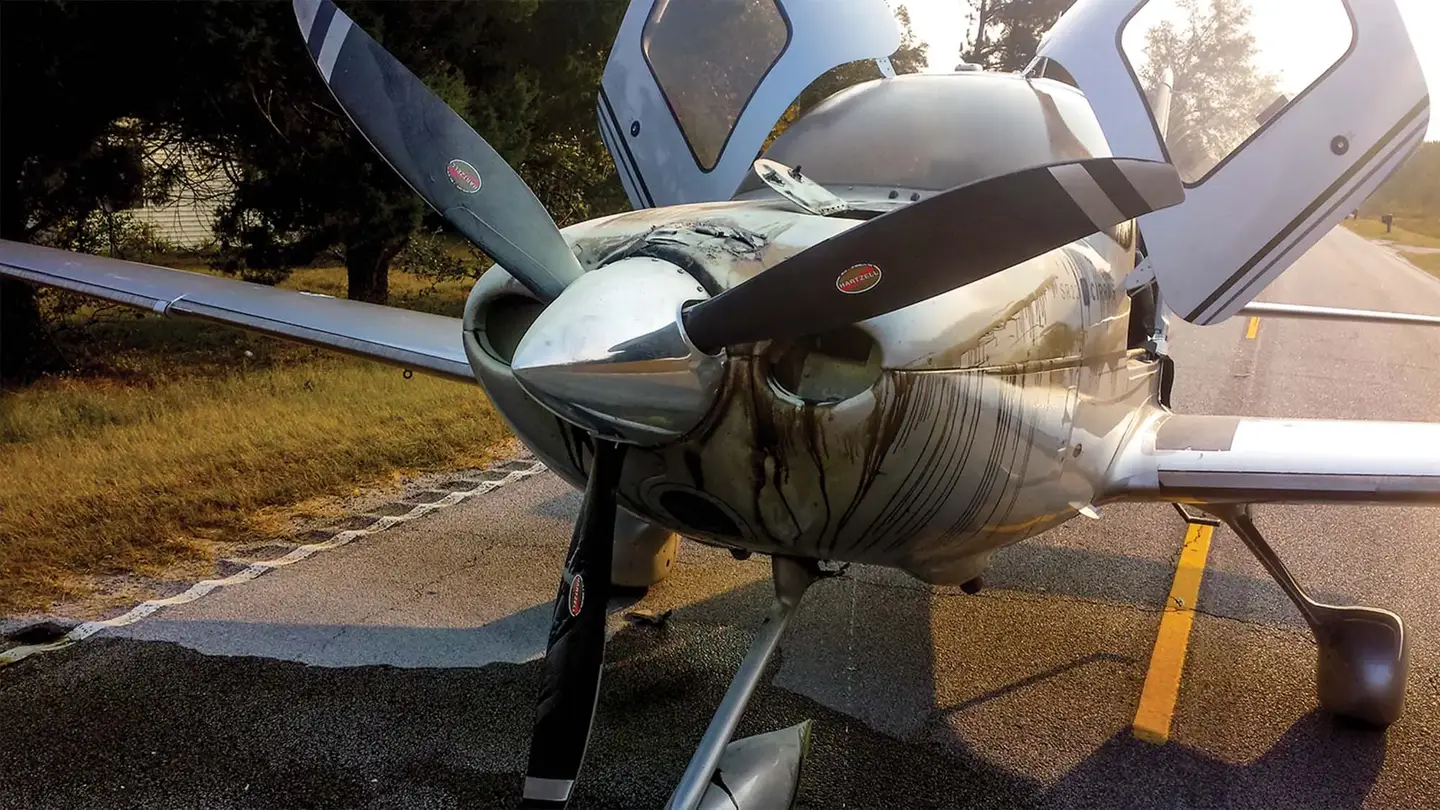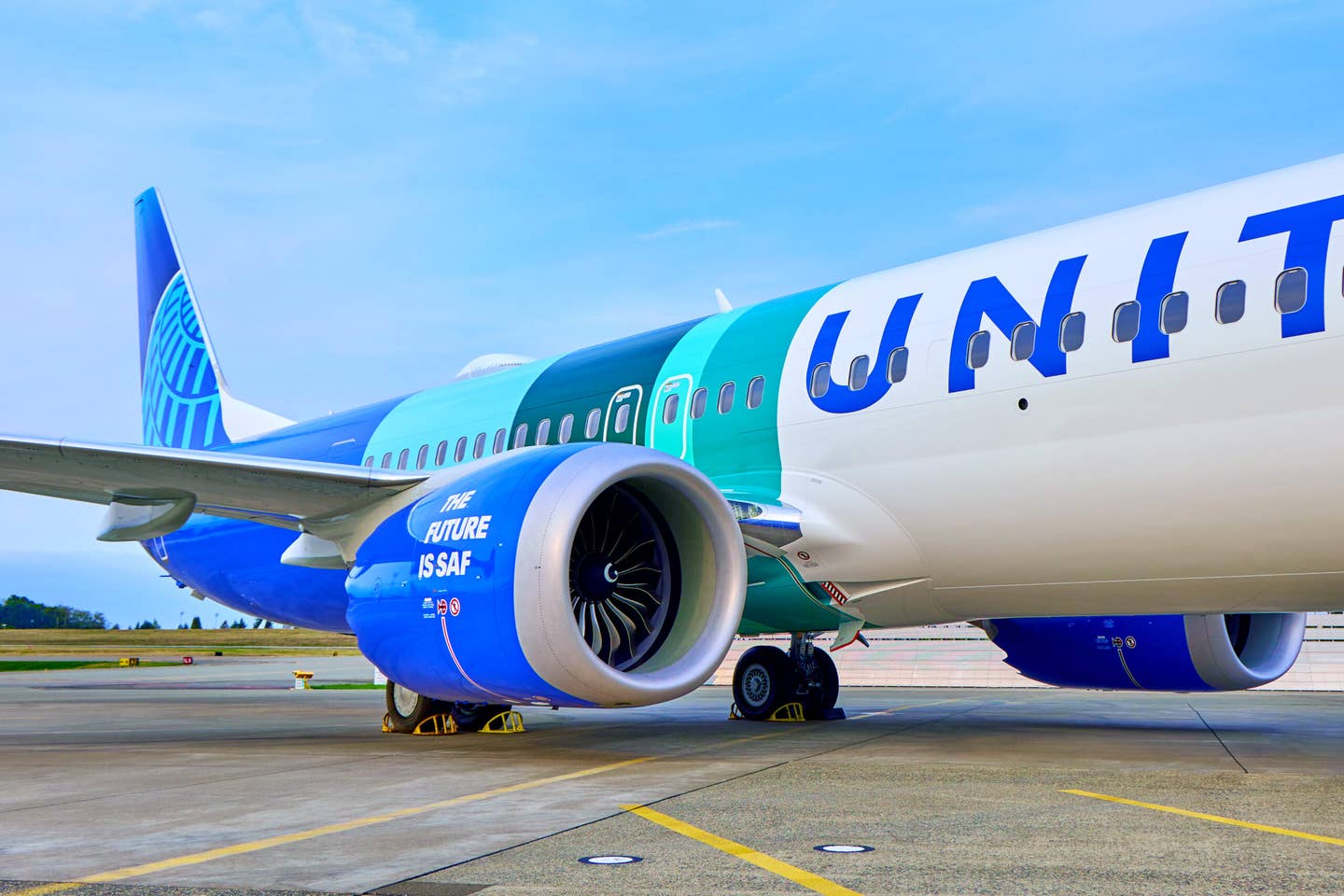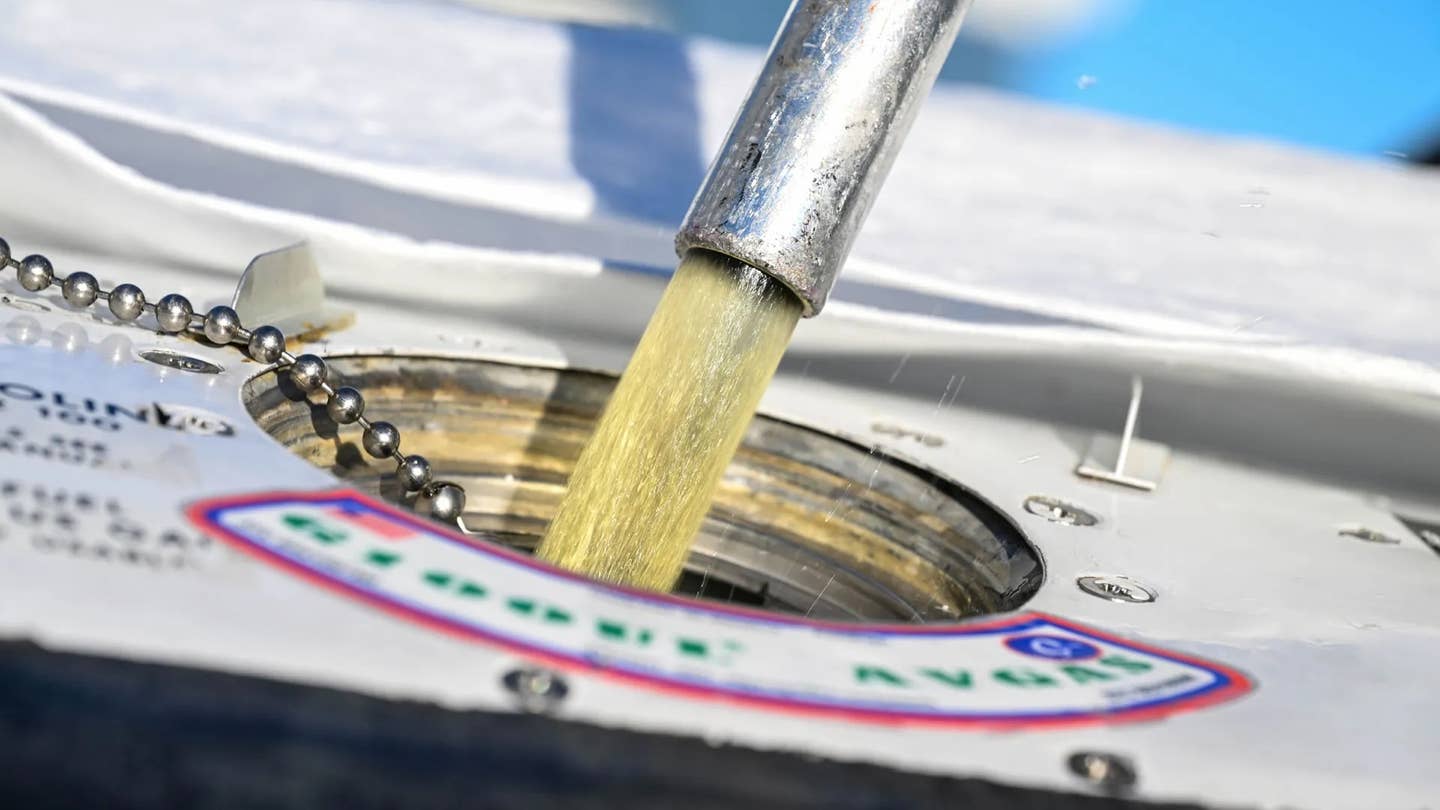Motor Head #6: Who Will Make Your Next Engine?
The “big two” engine manufacturers are no longer the only game in town for small piston engines. Aftermarket “clones” are here, and the new LSA market will further stir the pot. AVweb’s Marc Cook reports from Sun ‘n Fun.
This is what I call a great start to the flying season: Sun 'N Fun blew into Lakeland sporting great weather and a kind of subdued enthusiasm that bodes well for Experimental aviation. Why am I pleased with anything less than a full-chat hype fest? Because a mature industry is much more sustainable than one that gallops from one great, unfulfilled promise to the next.Just before the show, I began a conversation with Richard VanGrunsven -- designer of the RV series of homebuilts -- that was dominated by the issue of industry maturity. It's a good thing, he says, because it means the products are, as a whole, much better. The day of a newcomer showing up with a tantalizing new design, selling a handful of incomplete kits and then disappearing into bankruptcy or the wilds of South America is, for the most part, behind us. "What most people don't realize," he says, "is the size of the infrastructure required to support a large kit company. It's a big investment." And along with that, one presumes, is the built-in tendency to preserve the investment by creating product that has a chance in the marketplace. But this isn't the only reason Van's aircraft are conservative -- made of metal, careful in design and long in development. Indeed, they are like VanGrunsven himself: Cautious, thoughtful and unaffected by fashion.The big news was, of course, the sudden proliferation of Light Sport aircraft, and it seemed like every show day brought news of certification of another ready-to-fly aircraft. I've seen research that says customers want pre-built aircraft and are willing to pay between $25,000 and $50,000 for the privilege. They're going to be surprised; most of the "modern glass" LSAs are going to sell for around $80,000, while the tube-and-fabric types are expected to sell for around $65,000.But I digress ...Engine-related news was comparatively sparse at the show. Continental has resumed production of the venerable O-200 for Light Sport -- the dataplate on the engine I saw had an "LS" suffix. I expressed surprise to a well-known engine overhauler who said, "Well, sure. They've been making all the parts for the O-200, so it's just a matter of putting it back on the line." I'm sure there's more to it than that, but as I don't own and seldom fly a Cessna 150, the O-200 is hardly on my radar.The engine of choice for the high-end LSAs is the Rotax 912, a fine little mill (1352 cc, 83 cubic inches) with a growing reputation for durability. In fact, the only two complaints I hear consistently is that the engine is sufficiently different from traditional aircraft engines that a lot of technicians don't quite know how to deal with it in the fleet -- and the cost of a new engine. (Lately, the value of the dollar against the Euro has made life tough for airframers using the built-in-Austria 912.) For example, it uses a pair of motorcycle-style, constant-vacuum carbs that offer no pilot adjustments for mixture; the jetting can be changed to accommodate different local conditions but it's not the work of a moment and shouldn't be contemplated by anyone who doesn't understand the engine.Moreover, the 912 is meant to use auto-spec oil. It turns high revs: a maximum of 5800 for takeoff, which is turned down to a manageable 2387 at the prop thanks to a 2.43:1 reduction gearbox. It needs oil that works well in a fast-turning engine but that also has the additives necessary to deal with the highly loaded gear reduction drive that will also not contaminate the slipper clutch assembly fitted to the gearbox of some versions of the engine.I understand that a lot of mechanics dislike the engine because it's different, and that's their choice, of course. I actually owned one of these in the Pulsar XP I built a decade ago. Although I didn't put a ton of time on it before selling the airplane -- blame a growing family for the demise of a two-seat sportplane in my life -- it was utterly reliable and an excellent performer. I wouldn't hesitate to fly behind one of these engines, and many have done in the original Diamond Katana.I saw encouraging signs from the manufacturers of more conventional aircraft engines as well. Continental and Lycoming were at the show, of course. Continental is pushing hard to gain more original equipment installations for the FADEC-equipped IO-240 (think "two thirds of an IO-360 six-cylinder") and it all but owns the high end of the Experimental market with the IO- and TSIO-550. I asked around about the Honda engine project shown two years ago at Oshkosh and received shrugs in response. I continue to believe that the engine will reappear down the road in altered form.
Lycoming Continues to Push the IO-390
Over at the Lycoming booth was the IO-390-X on proud display. At the moment, the engine is available only for Experimental aircraft through Barrett Precision Engines. It is a large-bore version of the familiar angle-valve IO-360 that's rated at 210 horsepower. Monty Barrett, owner of BPA, told me that, "I don't want to overestimate the power of this engine, but I've had several on my dyno and they've all been at or above rated power." Why is this a big deal? Because many engines you and I fly with today are over-rated for power. "In fact, we've found that the 200-hp version of this engine [the IO-360] often doesn't make that much," Barrett says.I asked the Lycoming guys about certifying the IO-390 and they said that it would take an airframe manufacturer wanting it for original equipment before it made sense to certify. I thought for a moment about the possibilities and admit they are relatively few. Piper could use it to pump up the Arrow, of course; but I doubt Mooney would see the value in resurrecting the much-loved M20J/201 model as a platform. (Particularly not when it's doing better every week selling Ovations with the Garmin glass panel.)That said, the IO-390 makes a lot of sense for homebuilders. With the RV series as almost the de facto Experimental in 2005, the engine would have a large audience. It will fit into the RV-7 and RV-8 airframes where the IO-360 is now a popular option. VanGrunsven doesn't strictly approve the IO-390 because it's more powerful than the engine he used for flight testing of the airframes, but cautious homebuilders could always derate the engine. Word from builders who have used the 390 -- as well as hopped-up versions of the 360 -- is that the RV airframe will handle the power just fine. The 390 would also find a comfortable home in the Glastar Sportsman, which is now flying with an O-360 of 180 hp.But Lycoming, despite having to deal with crankshaft woes and lawsuits, is supposedly poised for aggressive maneuvers for Experimental aircraft. I couldn't get the Lycoming reps to bite, but I'd say that by Oshkosh we'll have a lot more news from Williamsport.
Clones, Clones Everywhere (Everywhere) ...
It's likely that a step-up in development at Lycoming has been spurred by the popularity of clone engines for homebuilts. To give them their due, companies like Engine Components and Superior Air Parts (that make the engine part) and the myriad shops that build these engines don't like the term "clone" one bit. They feel that their engines are much better than the factory alternatives: built better and using improved components that upgrade performance and at least try to put to rest some long-understood weak points in the basic engine designs.But let's face reality: A Superior XP-360 and an ECI Titan kit engine may well use different components but they are, in the basics of the design and in many, many details, Lycoming parallel-valve O-360s. You could, if you had to, replace your Superior cylinder with a Lycoming part in the field and it would all bolt right up. The very same engine mounts that could hang a gray engine will do the same job for either of these. For a company to say that these replacement engines are anything but reverse-engineered Lycomings is letting the marketing department have its way with the facts.That said, I greet these clone engines with great enthusiasm -- and not just because I think they are, in many ways, better engines, but because they provide a swift kick in Lycoming's behind to improve its own engines or risk losing market share. Open competition is nothing but a good thing, in my view.
Superior's XP-360 engine uses its own Millennium cylinders, which employ a lot of detail changes over a conventional Lycoming part. Superior changed the thickness of certain failure-prone areas of the assembly, particularly in the area of the exhaust port and spark plug hole. Superior also subtly changed the port shapes to improve airflow and therefore combustion efficiency. The XP also gets its own PMA-approved pistons and rings. The company offers three versions of the O-360 (plus another group with fuel injection rather than a carburetor) that differ by compression ratio. The standard XP-360 makes 180 hp (at 2700 rpm) with an 8.5:1 compression ratio. A 170-hp version is available with a 7.2:1 compression ratio. Both of these engines can be run on autogas. A third iteration uses 9.0:1 pistons and makes 185 hp, but must be run on 100LL avgas. The low-compression version is $100 more than the base engine; the high-comp version is $400 more.Superior also created its own connecting rods for the XP-360 -- they, too, are PMA approved -- that feature tongue-and-groove mating surfaces at the big end to improve rigidity. They grasp a balanced, VAR (vacuum arc remelt) crankshaft that's been balanced to 2 grams. Moreover, the inner diameter of the front of the crank has a special corrosion-blocking surface treatment. This is a great feature for builders intending to use the engine with a fixed-pitch prop, because in that configuration there's little to no oil flow through the nose of the crank, and sludge can develop there.
This crankshaft fits into cases developed by Superior with detail improvements. For example, there's more metal between the cylinder pairs on each side to reduce the chance of cracking. Also, the oiling system for the cam journals has been split, with inlets on both sides of the case near the back. The traditional Lycoming layout has oil going in one side, pushing forward, and then returning down the opposite side of the engine. This gallery provides lubrication for the cam journals and lifter bodies. Superior says this system maintains even oil pressure across all the journals. And these aren't your typical lifters, either. Superior fits the Plus version of the XP-360 with roller cam followers and a special cam with an updated grind for improved performance. (On the lifter front, Lycoming announced last year that it was rapidly developing roller lifters for its engines, and it's expected that they will be phased in during the last half of 2005 for certified engines.)Superior addresses thrust-face lubrication -- the forward flank of the crankshaft where it meets the cases -- by tapping a hole to the oil gallery in the nose of the case. Lycoming counts on splash lubrication in the original design. Other options include a lightweight Ryton plastic oil sump/intake plenum for the fuel-injected versions that separates the induction tubes from the oil supply. The result is cooler, denser intake charge. The conventional-looking sump for the carbureted models in fact hides a neat trick. In the standard Lycoming, the carburetor tube comes straight up to the divider, where the fuel and air head off to each of the four cylinders. In the Superior version, the integrated intake system has rounded corners where the cross tubes meet the upright and a small hump in the top center of the plenum to help the fuel/air get on its way.
Superior Is Not Alone
ECI makes all the parts necessary for its own clone engine but unlike Superior, which will sell you a completed engine (or even allow you to watch it being built or actually build it yourself with supervision) relies upon outside shops to build the engine for you. Perhaps best known among these shops is Teledyne Mattituck, which has an experimental version built to tight tolerances called the TMX-360. (I love the irony here: Teledyne, owner of Continental, is in the business of building all-new-parts Lycoming engines from ECI components.)The ECI Titan kit engine starts with PMA'd wide-deck cases that are drilled for piston-cooling jets (to be installed at the builder's option) and come with through-bolt seals to help prevent leakage. Riding in those cases is a new VAR crankshaft that has a unique approach to the thrust-face issue. In this case, ECI uses a special thrust bearing to transmit loads from the crank to the case. It is a more complicated assembly (but not by much) but it does not depend as much on local oil flow. ECI uses its own Titan cylinders for the kit engine, of course, that feature several changes over standard Lycoming practice. For one, the casting has been altered in several areas to increase wall thickness and improve crack resistance. The spark plug holes and injector bosses are beefed up. The steel barrels use ECI's Nickle+Carbide coating, which has had a good service history in production aircraft. Two basic versions are available: a standard-compression (8.5:1) 180-hp version and a 160-hp version that uses a 7.2:1 compression ratio. "The engine is only slightly wider than an O-320, so it will fit into any airframe set up for a 320," says ECI president Ed Salmeron.
What It All Means
Without question, competition from the "clone" engine makers is forcing Lycoming to reassess its position in the market. It is no longer the instant choice, although it still holds a commanding share of the Experimental market. But clearly the aftermarket will not be happy just to service the O-360 category. I expect to see a six-cylinder version appear from any or all of the aftermarket companies soon. A parallel-valve O-540 is not substantially different, design wise, from the O-360 and a great deal of the hard work -- on the cylinders -- has already been done. I'm not saying it's a slam-dunk, though. The recent issues with Lycoming's six-cylinder crankshafts will certainly cause the Feds charged with approving aftermarket cranks to look doubly hard at the paperwork. The good news is that we'd be dealing with modestly powered engines -- likely up to the 260-hp specification that Van's is so generously helping to sell with its four-seat RV-10 -- not the 300-plus-hp iterations that have given trouble.The better news for those of us also flying production-line aircraft is that these technologies (and production) techniques will filter into approved engines. Superior already offers the Vantage engine that's a close cousin to the XP-360; and I would wager, should the market call for it, that ECI and Mattituck would be more than happy to step up with all new engines for type-certificated aircraft.This is the argument I use with those who ask what would happen if the recent turn of legal events should cause parent company Textron to yank the plug on Lycoming. First of all, I don't see that happening; but if it should, I'm confident that this booming aftermarket could step in and fill the void.
Got motors on your mind? Check out the rest of Marc's columns.












